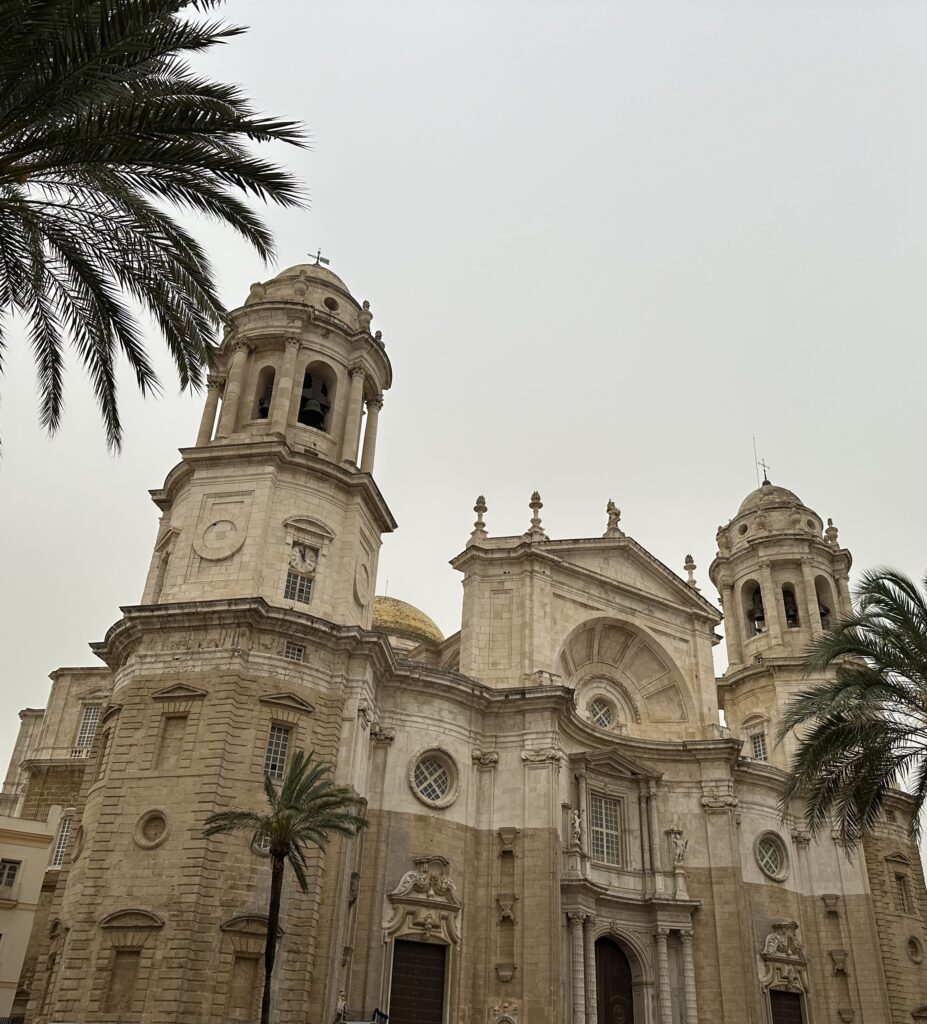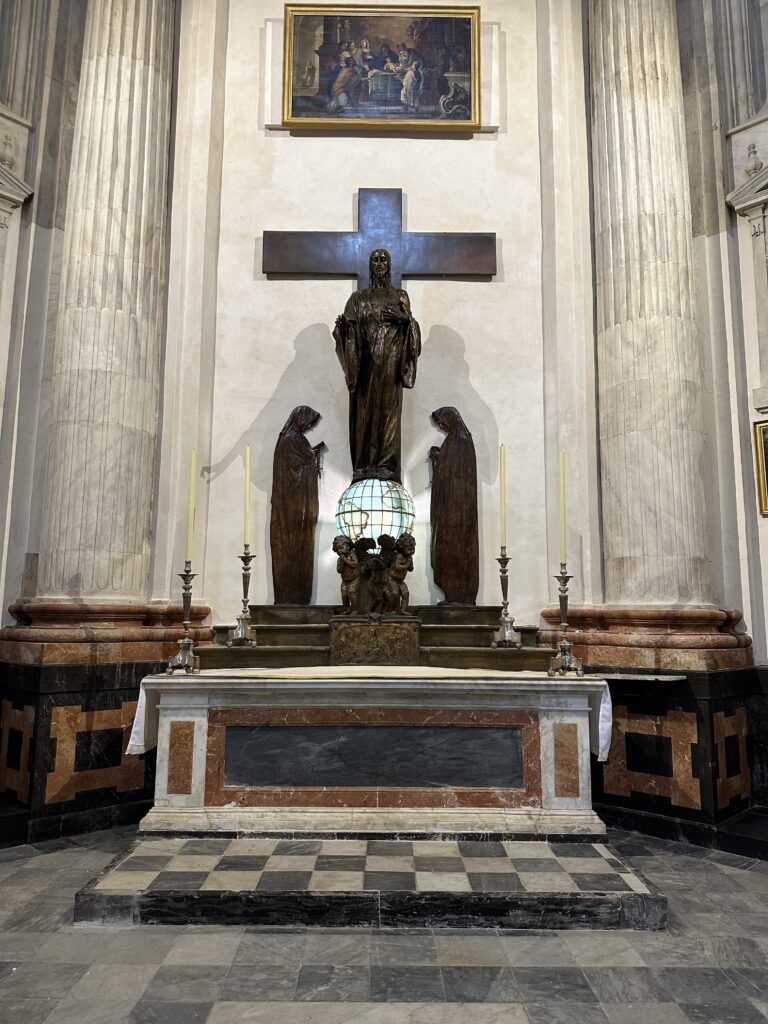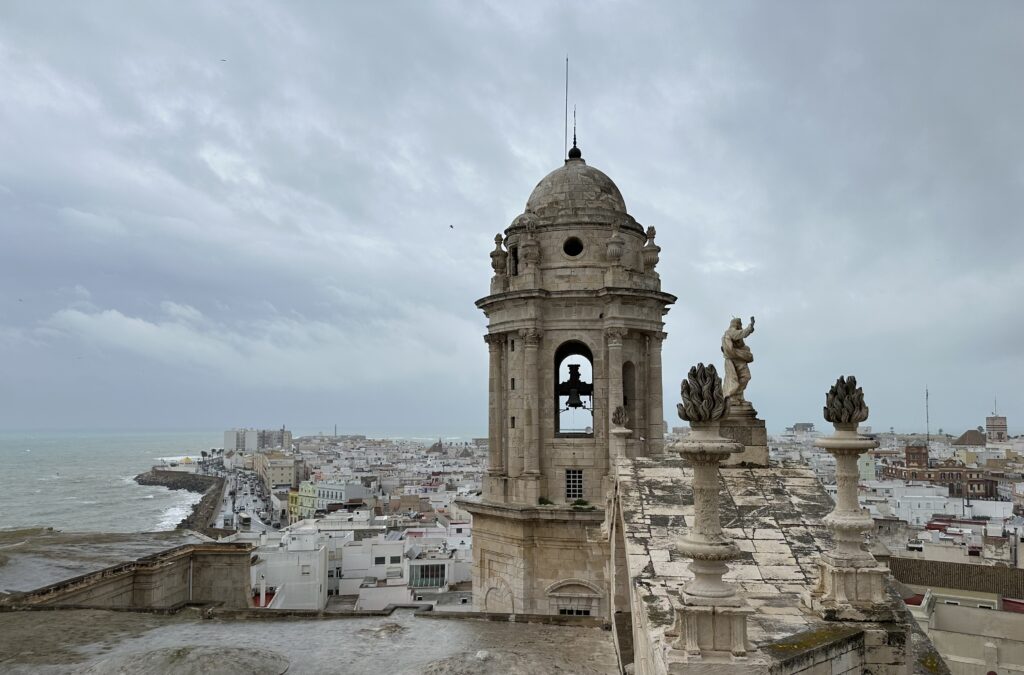With the hopes that we might have some beach time, we decided to spend 6 nights in Cadiz, a city recommended to us by our friends, Sharon and Charles.While the weather did not cooperate, we had plenty to see, including the beginning of the Semana Santa celebrations. We thank Sharon and Charles for encouraging us to explore this interesting city!

Cadiz is one of the oldest continuously inhabited cities in Western Europe. On the Atlantic Ocean side of the city, there are long sandy beaches which are busy in the summer, but now are almost deserted. Also on this side there are at least three fortresses, confirming the importance of Cadiz as a port from the Phoenician and Roman times, underMoorish rule between 711 and 1262, when the city was called Qādis, through to when Spain was a colonial power in the east (Indies) and in the Americas.
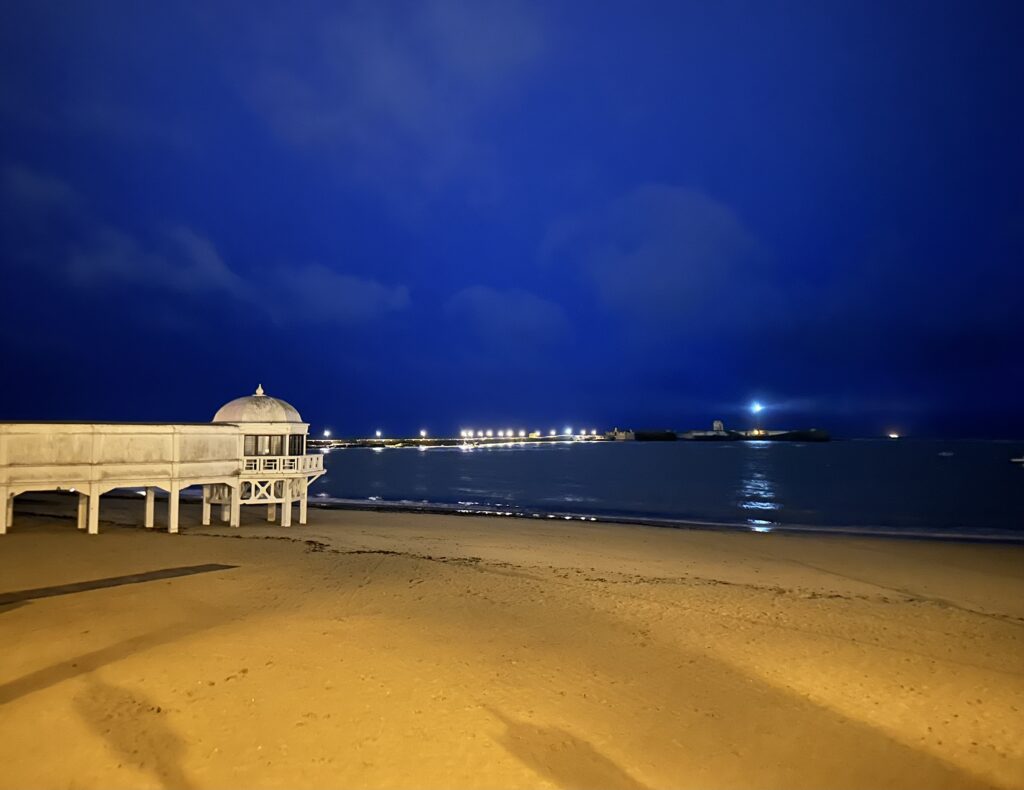


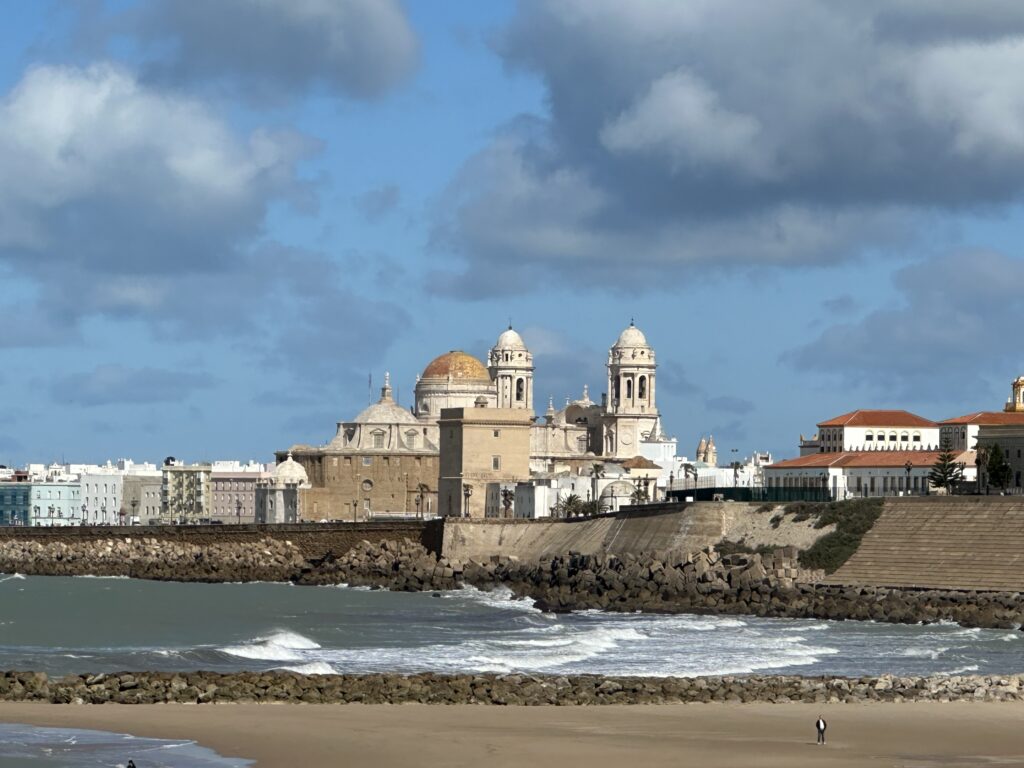
We were excited to be able to view ruins dating from both the Phonecian and Roman eras. When the present day puppet theatre, Museo del Títere, was being built, workers discovered remains of Roman buildings, as expected, but to their surprise, underneath they found the site of Phonecian houses and streets, ( and two skeletons) dating from the 9thC BCE. Visiting the Yacimiento Arqueológico Gadir, we were able to view one of the skeletons, this of a man trying to flee a fire that destroyed the city. The remains of one cat, one cow’s skull and hoof prints were also revealed, as well as remains of clay ovens and the cisterns used for making salt fish, an important commodity of the times. It was truly remarkable to be able to see what had remained hidden for so long.
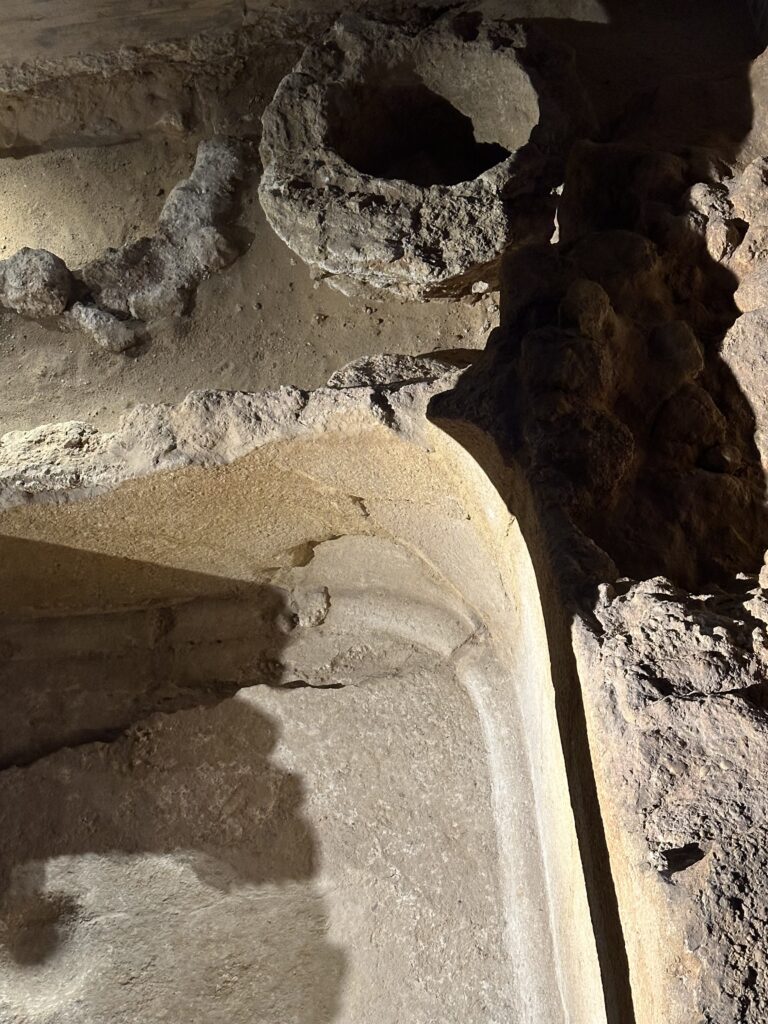
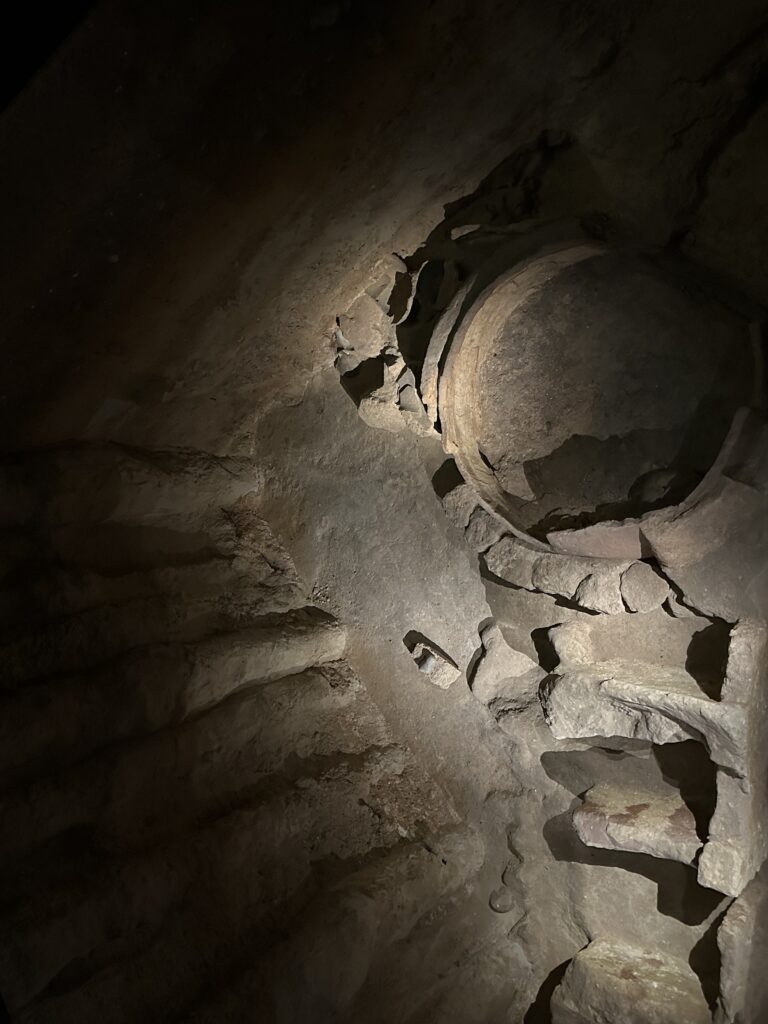

In the 1stC BCE, the Roman Theater of Cádiz was ordered to be built by Lucius Cornelius Balbo the Lesser. Since its discovery in 1980, excavations have allowed the recovery of an important part of the stands as well as the orchestra. The date of construction and its size (almost 120 meters in diameter) make it the oldest and the second largest Roman theatre on the Iberian Peninsula. It is estimated to have had capacity of more than 10,000 spectators. The importance of Cadiz in the Roman Empire is reflected in the fact that there were seats at the Colosseum in Rome reserved for representatives of the city. Much of the ancient city was destroyed by the conquering Visigoths in the 400s.
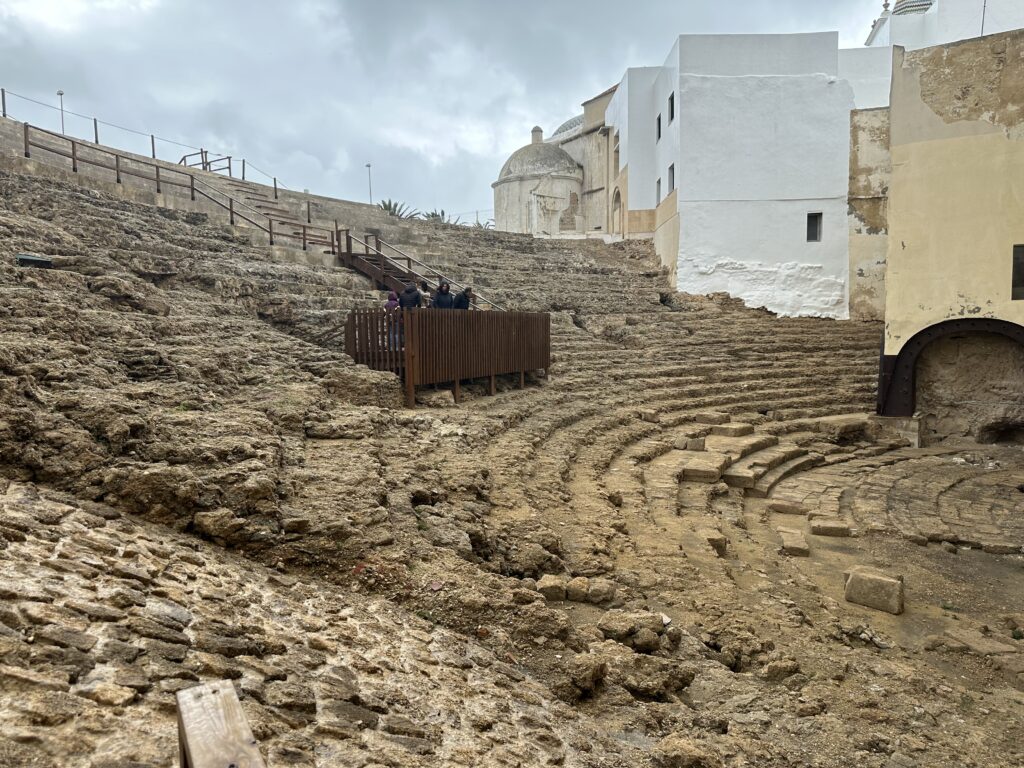
During the age of exploration, the city experienced a renaissance. Columbus sailed from Cádiz on his second and fourth voyages and the city later became the home port of the Spanish treasure fleet. Consequently, it became a major target of Spain’s enemies. Having grown up in the west of England, Paul remembers a picture of Sir Francis Drake sighting the Spanish Armada from Plymouth Ho in 1588. The previous year Drake had led an occupation of Cadiz Harbour for three days, an attack which delayed the Spanish Armada by a year. With the right to trade with the Americas expanded to most parts of mainland Spain in 1778, the monopoly of trade enjoyed by the port of the Bay of Cádiz came to an end. Many of today’s historic buildings in the Old City date from that era. These include 133 towers constructed as part of private houses, many designed to enable owners to monitor the arrival of their ships. We visited one of these towers, the Torre Tavira, to see a unique view of the city through a camera obscura. As it stands, the city’s skyline is not substantially different from what it was in the middle ages. Despite its relatively modest 45 meters of height, theTavira Tower still commands a panoramic view of the city and the bay.

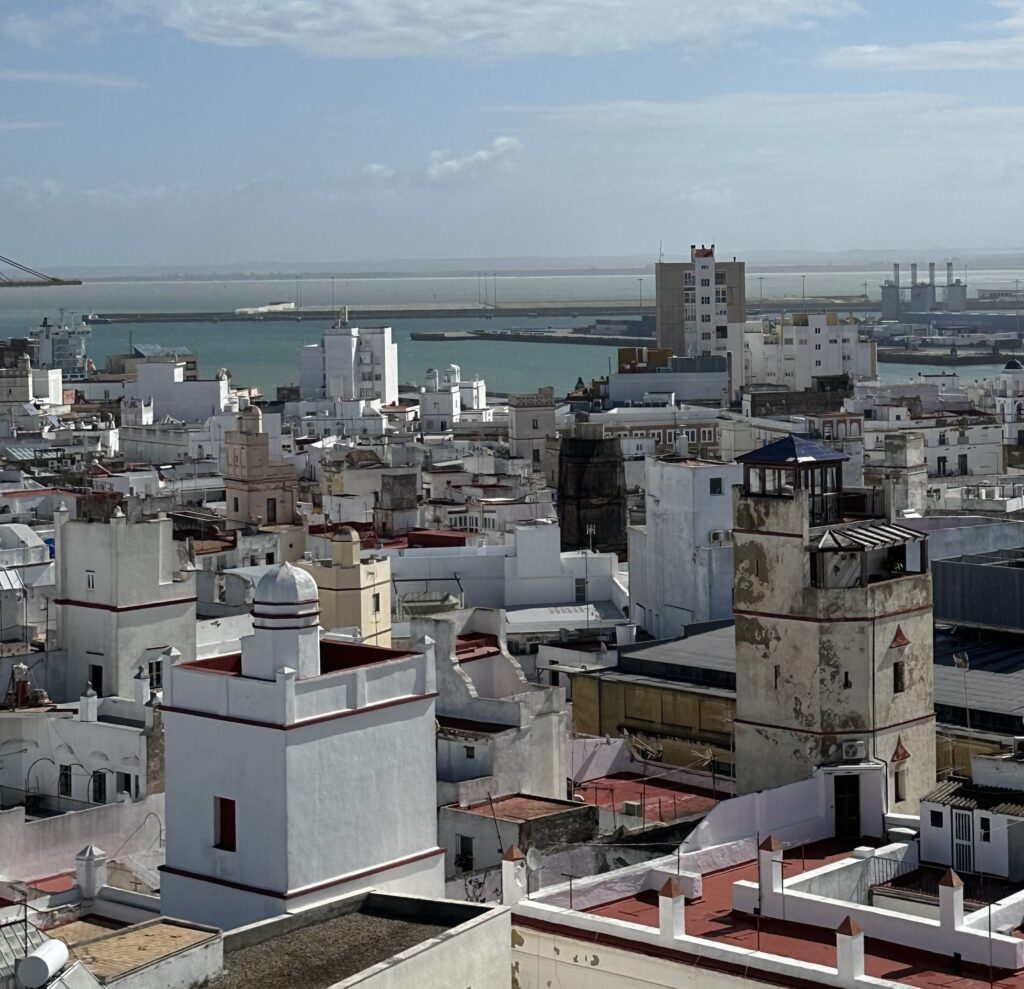
Today, Cadiz’ population is decreasing for various reasons related to its geography, including the fact that Cádiz is built on a sandspit, making it a costly proposition to sink foundations deep enough to support the buildings that would allow for a higher population density. The main industry of the Province of Cadiz is tourism and the area has the highest unemployment rate in all of Spain.
In addition to soaking up history (if not sun), we experienced the beginning of Easter celebrations, with the first of the Semana Santa processions which just happened to go along the street directly below our balcony. Unfortunately, by Palm Sunday, the weather had deteriorated, causing all processions to be cancelled. Only one proceeded on Monday evening. While out for a walk along the sea wall that day, we noticed a number of (mostly) young women wearing cloaks and carrying or wearing teal-coloured capirotes (hats), walking away from or waiting outside the Iglesia del Carmen. Soon, the church doors opened. Curious, we went in to find it crowded with young and old waiting to view the two pasos, which were to have been carried to the Cathedral, but with the procession cancelled, were being guarded by honour guards. Some young people, including musicians, who were clearly upset with the cancellation of the procession, were being comforted by family members or friends.
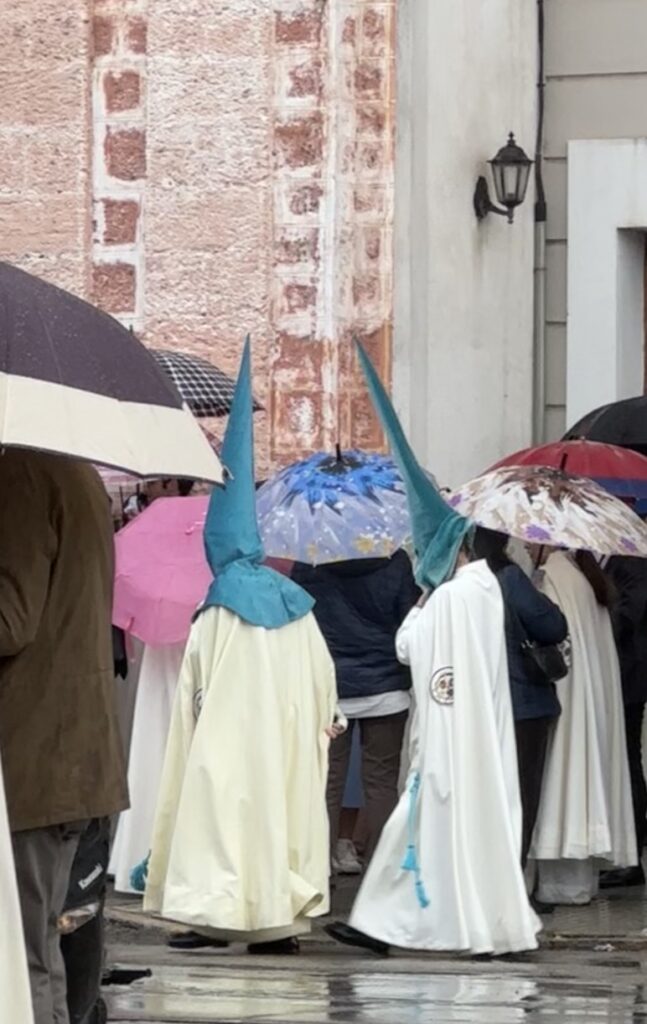

Coffee notes: Sensa Cafe serving a blend of Brazilian, Honduran and Colombian cor espresso (9.5).
